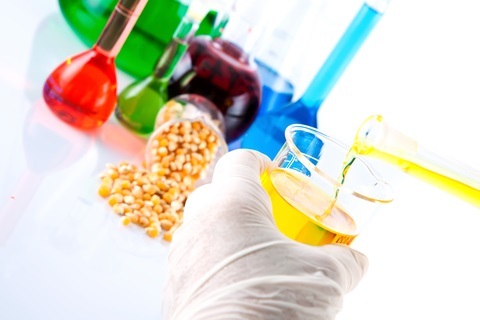
 Data Structure
Data Structure Networking
Networking RDBMS
RDBMS Operating System
Operating System Java
Java MS Excel
MS Excel iOS
iOS HTML
HTML CSS
CSS Android
Android Python
Python C Programming
C Programming C++
C++ C#
C# MongoDB
MongoDB MySQL
MySQL Javascript
Javascript PHP
PHP
- Selected Reading
- UPSC IAS Exams Notes
- Developer's Best Practices
- Questions and Answers
- Effective Resume Writing
- HR Interview Questions
- Computer Glossary
- Who is Who
Immobilized Enzyme Based Bioreactor
Introduction
Enzymes are complex biological catalysts that accelerate chemical reactions in living organisms. They play a crucial role in many metabolic pathways in the body, including digestion, energy production, and DNA replication.
Because of their specificity and efficiency, enzymes have found numerous industrial applications, from food and beverage processing to the production of biofuels and pharmaceuticals. However, enzymes are often unstable and sensitive to environmental conditions, which can limit their usefulness in industrial settings.
To address this issue, immobilized enzyme-based bioreactors have been developed, which allow for the continuous and controlled use of enzymes in various applications.
What is an Immobilized Enzyme-Based Bioreactor?
An immobilized enzyme-based bioreactor is a device that contains enzymes that are attached to a support material or carrier, which immobilizes them in a specific location within the reactor.
The immobilized enzymes can then be used in a continuous-flow system, where reactants flow through the reactor and are catalyzed by the immobilized enzymes. Immobilization offers several advantages over using free enzymes, including increased stability, greater reusability, and easier separation of the enzyme from the product.
There are several different methods of immobilizing enzymes, including adsorption, covalent binding, and entrapment. In adsorption, enzymes are attached to a support material through non-covalent interactions, such as van der Waals forces or hydrogen bonding.
Covalent binding involves the formation of a covalent bond between the enzyme and the support material, while entrapment involves physically enclosing the enzyme within a matrix, such as a gel or a membrane.
Applications of Immobilized Enzyme-Based Bioreactors
Immobilized enzyme-based bioreactors have a wide range of applications in various industries, including food and beverage processing, pharmaceuticals, and biofuels.
Food and Beverage Processing
Enzymes are widely used in the food and beverage industry to improve the texture, flavor, and nutritional value of products. Immobilized enzymes can be used to produce high-fructose corn syrup, a sweetener used in many soft drinks and processed foods. They can also be used to produce lactose-free milk and reduce the bitterness of coffee.

Pharmaceuticals
Enzymes are used in the pharmaceutical industry to produce drugs and drug intermediates. Immobilized enzymes can be used to produce amino acids, which are used in the production of antibiotics and anticancer drugs. They can also be used to produce chiral intermediates, which are used in the production of drugs with specific stereochemistry.
Biofuels
Enzymes are used in the production of biofuels, such as ethanol and biodiesel. Immobilized enzymes can be used to hydrolyze biomass, such as cellulose and hemicellulose, into simple sugars, which can then be fermented into ethanol. They can also be used to produce biodiesel by transesterification of vegetable oils.

Advantages of Immobilized Enzyme-Based Bioreactors
Immobilized enzyme-based bioreactors offer several advantages over free enzymes, including ?
Increased Stability
Immobilized enzymes are more stable than free enzymes because they are protected from denaturation and proteolysis. Immobilized enzymes are also less likely to be degraded by environmental factors, such as pH and temperature changes.
Greater Reusability
Immobilized enzymes can be used multiple times without losing their activity. This reduces the need for enzyme replenishment and increases the efficiency of the bioreactor.
Easier Separation of Enzyme from Product
Immobilized enzymes are easier to separate from the product because they are attached to a support material. This simplifies downstream processing and reduces the cost of enzyme recovery.
Higher Concentration of Enzyme
Immobilized enzymes can be used at higher concentrations than free enzymes, which can increase the rate and efficiency of the reaction.
Greater Control Over Reaction Conditions
Immobilized enzymes can be used in a continuous-flow system, which allows for greater control over the reaction conditions. This can lead to more efficient and consistent results.
Lower Risk of Contamination
Immobilized enzymes are less likely to contaminate the product because they are attached to a support material. This reduces the risk of product rejection due to contamination.
Disadvantages of Immobilized Enzyme-Based Bioreactors
Despite their many advantages, immobilized enzyme-based bioreactors also have some disadvantages, including ?
Cost
The cost of producing and maintaining immobilized enzymes can be higher than that of free enzymes. This can limit the commercial viability of some applications.
Limited Enzyme Loading
Immobilized enzymes can have a limited loading capacity, which can reduce the efficiency of the bioreactor.
Reduced Enzyme Activity
Immobilization can reduce the activity of enzymes, which can lead to lower reaction rates and efficiency.
Potential Leaching of Enzymes
In some cases, enzymes can detach from the support material and contaminate the product. This can be mitigated through the proper design and operation of the bioreactor.
Conclusion
Immobilized enzyme-based bioreactors offer many advantages over free enzymes in various industrial applications. They provide increased stability, greater reusability, easier separation of an enzyme from a product, higher concentration of enzyme, greater control over reaction conditions, and lower risk of contamination.
However, they also have some disadvantages, including cost, limited enzyme loading, reduced enzyme activity, and potential leaching of enzymes. Despite these limitations, immobilized enzyme-based bioreactors have found wide application in many industries, including food and beverage processing, pharmaceuticals, and biofuels.
With continued research and development, they have the potential to revolutionize the use of enzymes in industry and contribute to a more sustainable and efficient economy.

